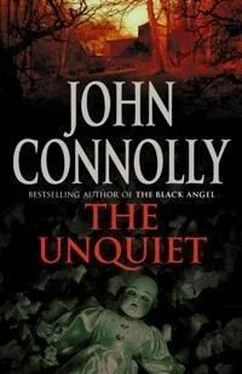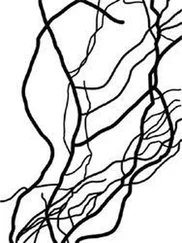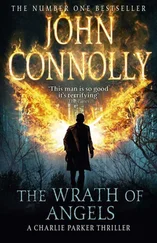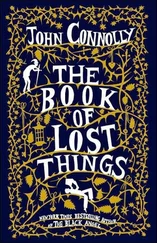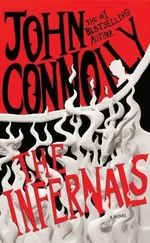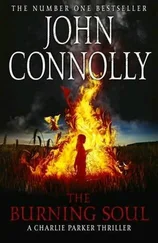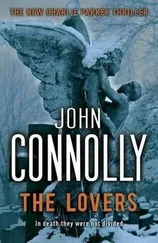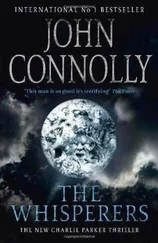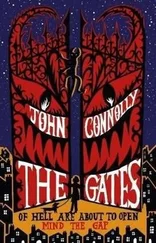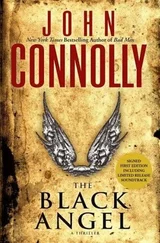“Do you have any idea where these children are now?”
“Some of them. I can’t give you any details. I’m sorry. I could, perhaps, show you details of their allegations with their identities removed, but it won’t tell you much more than you already know.”
“I’d appreciate it if you would.”
He led me back to the reception area, then returned to his office. Twenty minutes later he returned with a handful of printed pages.
“This is all that I can give you, I’m afraid.”
I thanked him for the papers, and for his time. He told me to contact him if I needed anything more, and gave me his home number.
“Do you think Daniel Clay is dead, Dr. Christian?” I asked.
“If he was involved-and I’m not saying that he was-then he would not have wanted to face ruin, disgrace, and imprisonment. We may have disagreed on most things, but he was a proud, cultured man. Under the circumstances, he might have taken his own life. If he wasn’t involved in some way, well, why did he run? Perhaps the two events, the revelations of possible abuse and Clay’s disappearance, were entirely unconnected, and we are besmirching an innocent man’s reputation. I simply don’t know. It is strange, though, that no trace of Daniel Clay has ever been found. I work with the available data, and nothing more, but from the data I have before me, I’d have to say that Clay is dead. The question then is, did he take his own life or did someone deprive him of it?”
I left the Midlake Center and drove home. At my kitchen table, I read the sections of the case reports that Christian had given to me. As he had promised, they added little to what he had told me, except to make me despair, if I ever needed reminding, at what adults were capable of doing to children. The details of the abusers’ bodies were vague, especially given that, in a number of cases, the children had been blindfolded throughout the abuse, or had been so traumatized by it that they were unable to recall anything about the men themselves, but Christian was right: none of the available descriptions matched the physical appearance of Daniel Clay.
When I was done, I took Walter for a walk. He had matured a lot in the last year, even for a young dog. He was quieter and less skittish, although he was still but a shadow of his ancestors, the big hunting dogs owned by the original planters and settlers of Scarborough. My grandfather once told me of a traveling showman who stopped for a night at the house of the local ferryman. The showman was carrying a lion east, and a hunter proposed, after some liquor was taken, to match one of his dogs against the lion for a wager of a barrel of rum. The showman agreed and, in front of a gathering of townsmen, the dog was put in the lion’s cage. The dog took one look at the lion, sprang for its throat, then forced it onto its back and set about killing it. The showman intervened and paid the hunter the barrel of rum and fifty dollars to be allowed to shoot the dog in the cage before it tore the lion apart. Walter wasn’t the lion-killing kind, but he was my dog, and I loved him nonetheless. My neighbors, Bob and Shirley Johnson, looked after him for me if I had to go away for a few days. Walter didn’t mind staying with them. He was still free to roam his territory, and they spoiled him. They were retired and didn’t have a dog of their own, so Bob was always happy to take Walter for a stroll. It worked out well for everybody.
By now, we had reached Ferry Beach. It was late, but I needed the air. I watched Walter tentatively dip a paw into the water, then withdraw it rapidly. He barked once in reproof, then looked at me as if there was something that I could do to raise the temperature of the sea so he could splash away. He wagged his tail, then all of the hairs on his back seemed to rise at once. He grew very still and stared past me. His lips parted, exposing his sharp white teeth. He growled very low in his throat.
I turned. A man appeared to be standing among the trees. If I looked directly at him I could see only branches and spots of moonlight where I thought he was standing, but he seemed to appear more clearly when I looked at him with my peripheral vision, or if I tried not to focus on him at all. He was there, though. Walter’s reaction was evidence of that, and I still recalled the events of the night before: the glimpse I had caught of something at the edge of the forest before it faded away; a child’s voice whispering from the shadows; words scrawled on a dusty windowpane.
Hollow Men.
I didn’t have my gun. I had left the.38 in the car while I was talking to Dr. Christian and had not retrieved it before taking Walter out, while the Smith 10 was in my bedroom. I now wished I had either one of them with me, or maybe both.
“How you doing?” I called. I raised my hand in greeting. The man didn’t move. His coat was a dirty tan in color, so that it blended with the shadows and the sandy earth. Only a little of his face was visible: a hint of pale cheek, of white forehead and chin. His mouth and eyes were black pools, fine wrinkles visible where the lips might have been and at the edges of the dark sockets, as though the skin in those places had become shrunken and dried. I walked closer, Walter advancing beside me, hoping to see him more clearly, and he began to retreat into the trees, the darkness embracing him.
And then he was gone. Walter’s growls ceased. Warily, he approached the spot where the figure had been standing and sniffed at the ground. Clearly he didn’t like what he smelled there because his muzzle wrinkled, and he ran his tongue over his teeth as though trying to rid it of a bad taste. I walked on through the trees until I came to the boundary of the beach area, but there was no sign of anyone. I didn’t hear a car start. All seemed quiet and still.
We left the beach and walked home, but Walter stayed close to me all the way, only pausing at times to stare into the trees to our left, his teeth slightly bared as though waiting for the approach of some threat as yet unknown.
I drove down to Lynn the next morning. The sky was clear and blue, the color of summer, but the deciduous trees were bare, and the workers employed on the never-ending turnpike extension were wrapped in hooded sweaters and wore thick gloves to ward off the cold. I drank coffee on the ride and listened to an album of North African protest music. It drew disapproving looks when I stopped for gas in New Hampshire, where the sound of Clash songs being bellowed in Arabic was clearly regarded as evidence of unpatriotic leanings. The songs kept my mind off the figure glimpsed in the trees at Ferry Beach the night before. The memory of it evoked a curious response, as though I had witnessed something that I was not really meant to see, or had broken some taboo. The strangest part of it was that the figure had seemed almost familiar to me, as if I had at last encountered a distant uncle or cousin about whom I had heard a great deal but whom I had never before met.
I left the interstate for Route 1, as ugly a stretch of uncontrolled commercial development as could be found anywhere in the Northeast, and then took 107 North, which wasn’t much better, heading through Revere and Saugus toward Lynn. I passed the huge Wheelabrator waste management plant on the right, then GE Aviation, the big employer in the area. Used-car lots and vacant sites dotted the landscape as I entered Lynn, its streetlights adorned with Stars and Stripes banners welcoming all comers, each sponsored by a local business. Eldritch and Associates wasn’t among them, and when I came to their offices it wasn’t hard to see why. It didn’t look like a particularly prosperous operation, occupying the top two floors of an ugly gray building that squatted defiantly on the block like a mongrel dog. Its windows were filthy and nobody had refreshed the gold lettering upon them announcing the presence of a lawyer within in a long, long time. The premises were sandwiched between Tulley’s bar on the right, itself a pretty austere place that appeared to have been built to repel a siege, and some gray-green condos with businesses on the lower level: a nail salon, a store called Angkor Multi Services with signs in Cambodian, and a Mexican restaurant advertising pupusas, tortas, and tacos. At the end of the block was another bar that made Tulley’s look like it had been designed by Gaudi. It was little more than a doorway and a pair of windows, with the name above the entrance painted in jagged white letters by someone who might have been suffering from serious delirium tremens at the time, and who had offered to do the job in return for a hand-steadying drink. It was called Eddys, without the apostrophe. Maybe if they’d called it Steady Eddys, they might have gotten away with the sign on ironic grounds.
Читать дальше
